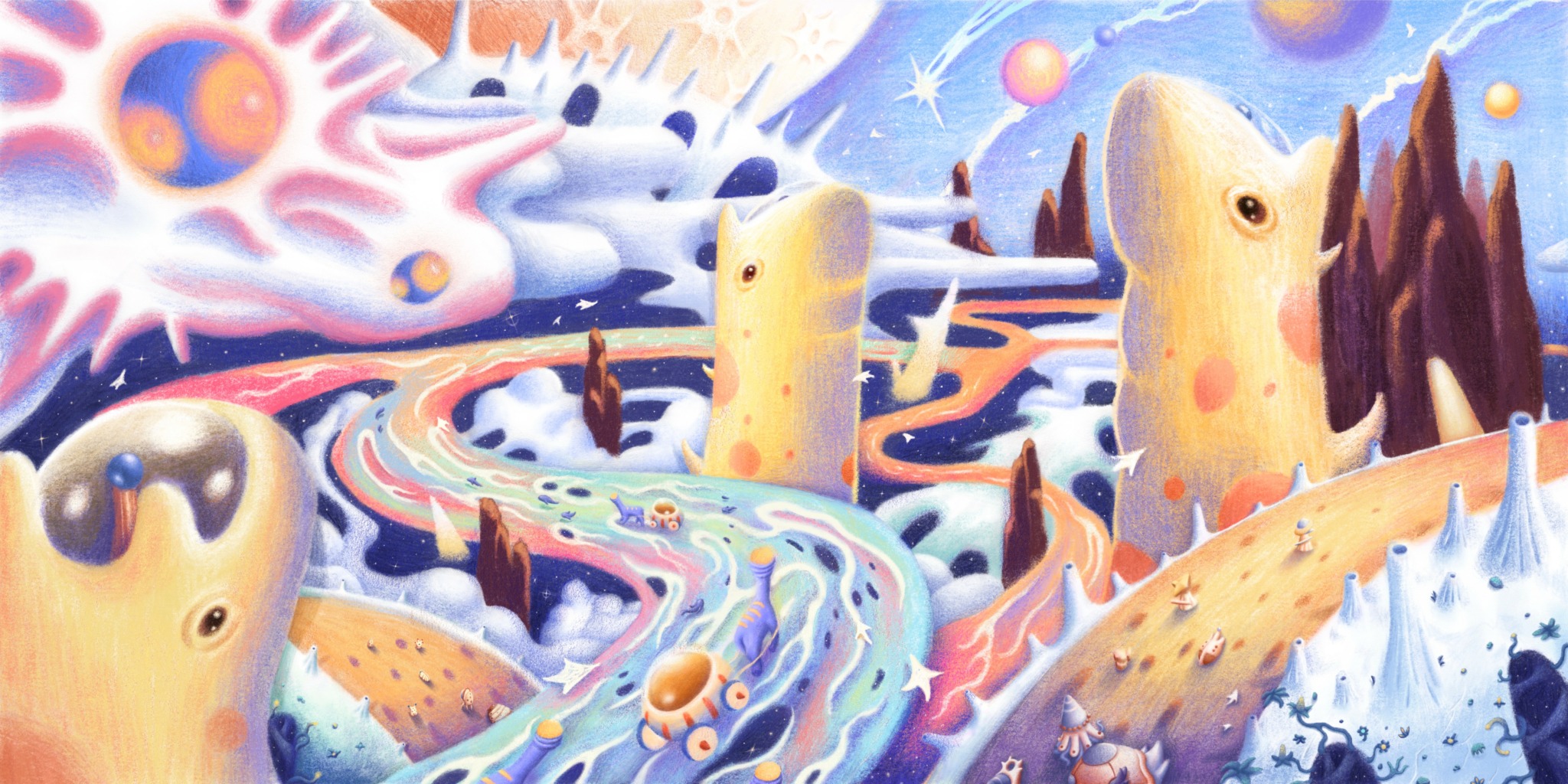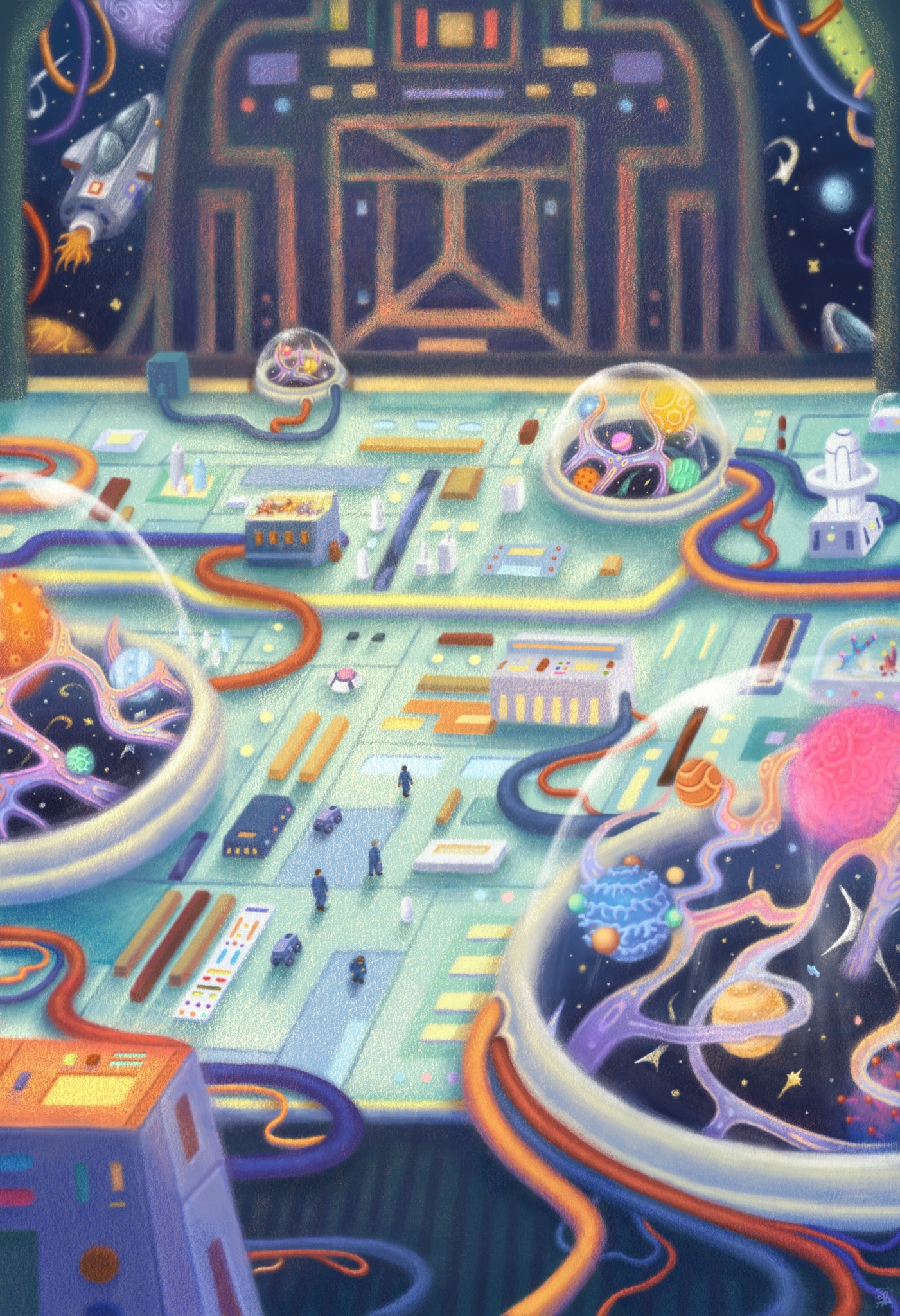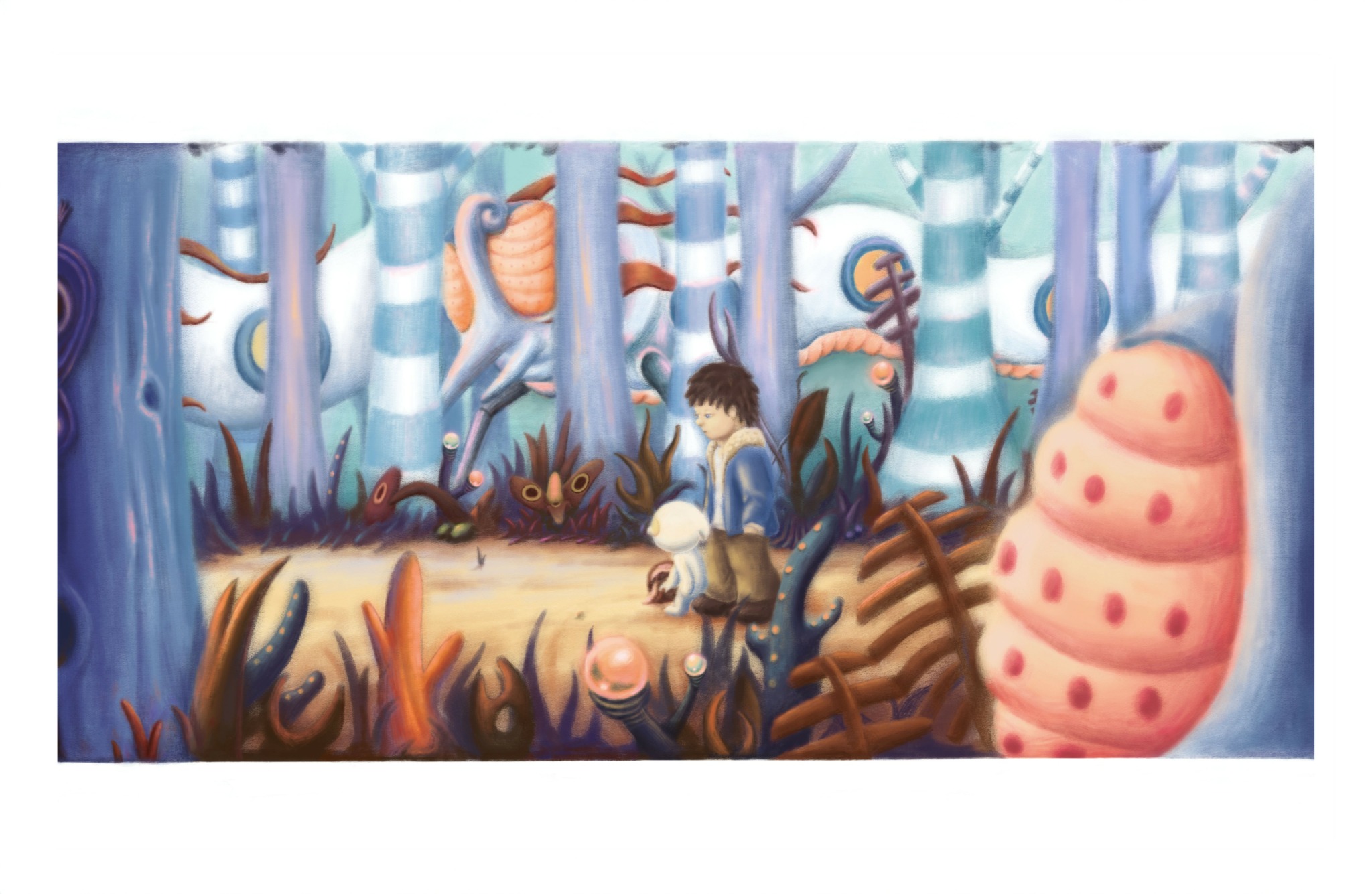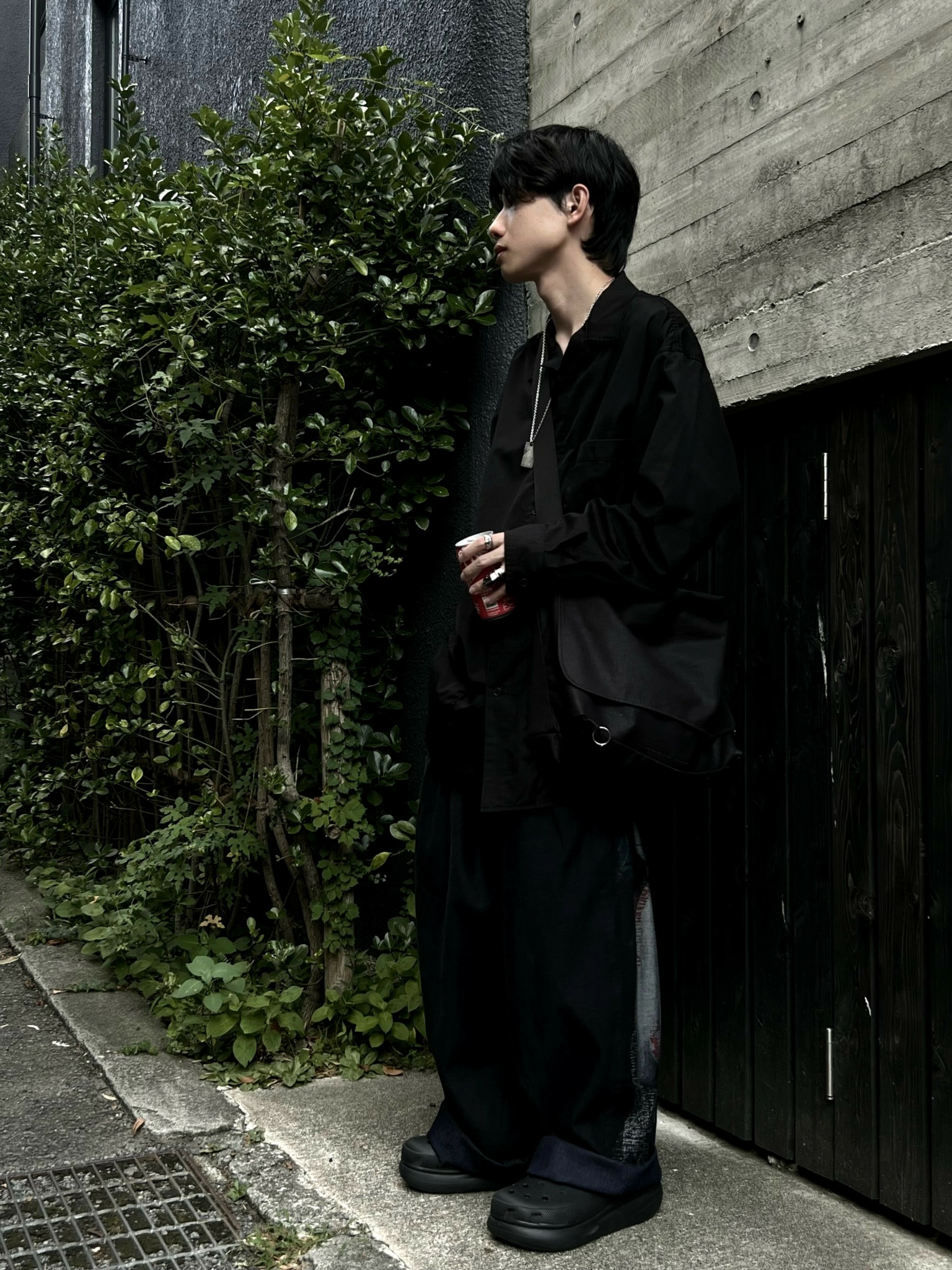We recently connected with Zhishen Li and have shared our conversation below.
Zhishen, thanks for taking the time to share your stories with us today How did you learn to do what you do? Knowing what you know now, what could you have done to speed up your learning process? What skills do you think were most essential? What obstacles stood in the way of learning more?
As an illustrator, I have taken many detours. I was having a hard time searching for a distinct voice. During my time at university, I began to explore this more seriously. After discovering digital painting, I experimented with various brushes and eventually became drawn to the airbrush tool. It heightened my sensitivity to light and shadow, sparking an interest in rendering form and atmosphere. This tool became central to how I expressed the dreamlike, soft-edged language of my sci-fi visuals. However, I gradually noticed its limitations in the digital medium. It often made the colors appear muted and the overall tone overly restrained. In response, I shifted toward pencil brushes and began simplifying my color palette for clarity and vibrancy. Through extensive trial and error, alongside analysis of strong trendy illustrations, I slowly refined a style that combined bold color, clear form, and personal expression. This journey taught me the true value of refining a work to completion.

Great, appreciate you sharing that with us. Before we ask you to share more of your insights, can you take a moment to introduce yourself and how you got to where you are today to our readers.
I grew up in Guangzhou, China, and started drawing pretty early. Mainly imagined cartoon characters on a blackboard at home. That interest stuck with me, and I began formal art lessons when I was nine. I was really into anime and Tokusatsu shows like Ultraman and Kamen Rider, and those “heroes” and “monsters” became my first creative inspirations. As I got older, I was drawn to sci-fi stories about space and the unknown, which pushed me to start building my own imagined worlds. I began designing ecosystems, characters, and creatures. I often start with detailed features like tentacles, exoskeletons, or compound eyes, combining elements of scientific illustration with picture book. I try to keep the style simple but memorable, and that whole process of world-building has always been a way for me to explore my curiosity and love for the unknown.
I often introduce myself as an artist who builds imaginative worlds and also reflects on themes of innocence, purity, and the inner emotional realm. I aim to express these ideas through my unique visual language. Every element I create is both part of my stylistic language and a tool for conveying thought. In my senior thesis, I did a children’s book titled “Nova”, I used the perspective of a curious child exploring the unknown to express anxiety and courage in the face of uncertainty. In my recent illustration project “Baku”, I imagined a dreamlike world inhabited by mythological “dream-eating” creatures, visualizing what our dreamscapes might look like. I’ve always aspired to use fantasy to construct places and emotional states that we don’t often reach in real life.

We’d love to hear a story of resilience from your journey.
I often found myself in situations of solitude or complete uncertainty in my professional journey, and these moments seemed to arrive in ways that were entirely unpredictable. As a recent graduate in Illustration, when I reflect on my academic experience, I realize how much I lacked meaningful interaction with professionals in the industry. The frequent changes in classes and abundance of unstructured time made it difficult for someone like me, who isn’t naturally expressive, to form stable relationships with classmates and teachers, unlike during high school. This lack of communication somehow limited my ability to evaluate my technical skills.
Sitting in my illustration class, I came to understand that it wasn’t enough to only speak with professors. It also demanded actively learning from classmates and studying excellent work to sharpen my visual judgment. I had once believed I had found my personal style and habits, but after emerging from a long period of isolation, I became aware of significant flaws in my practice. Unfortunately, by the time I realized this, it was already relatively late in my studies.
In response, I reminded myself to analyze excellent works from a broader perspective and to extract useful elements as the foundation for my learning. I believe that when we find ourselves in isolated or uncertain positions, the most important things to hold onto are humility and clarity. These two qualities allowed me to rapidly strengthen both my technique and my confidence.

What do you think is the goal or mission that drives your creative journey?
My primary purpose in creating is to express the thoughts that arise in specific moments, while also showcasing my style. All of my ideas stem from my own life; this includes challenges I’ve faced, moments that moved me, and thoughts or perspectives that sparked curiosity. I usually try to convey these ideas in a creative and clear way. As I’ve said before, I hope to create worlds we can’t normally access. Whether they represent a particular state of being or serve as a kind of utopia that symbolizes a particular meaning.
Contact Info:
- Website: https://zhishen.univer.se
- Instagram: @jasonli83
- Facebook: Zhishen Li
- Linkedin: Zhishen Li





